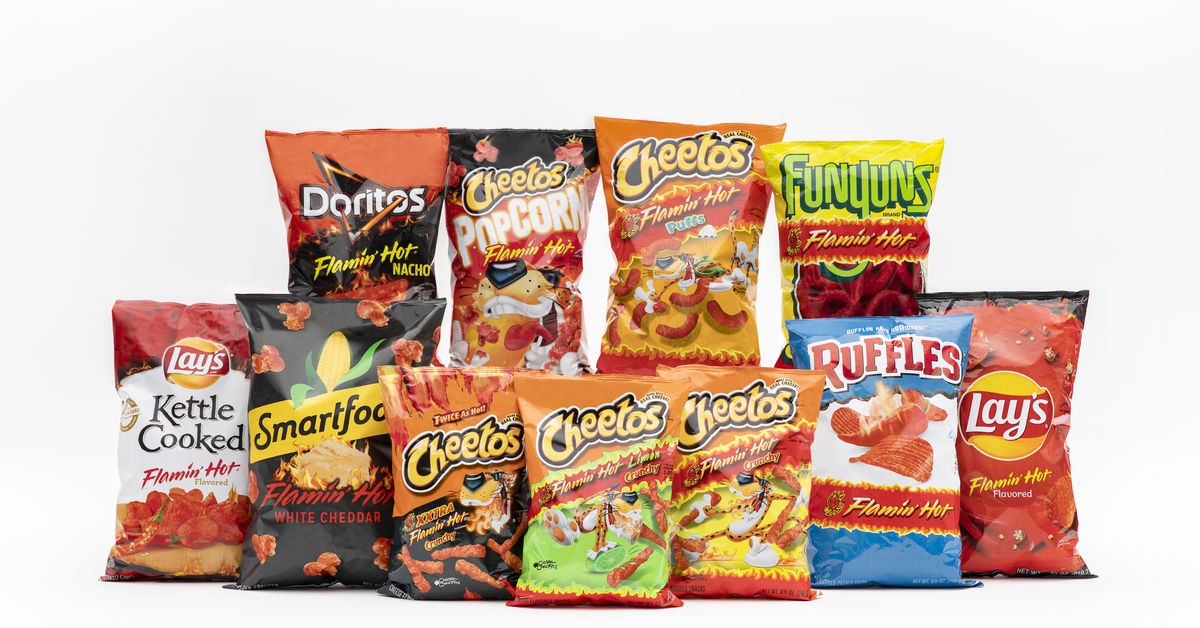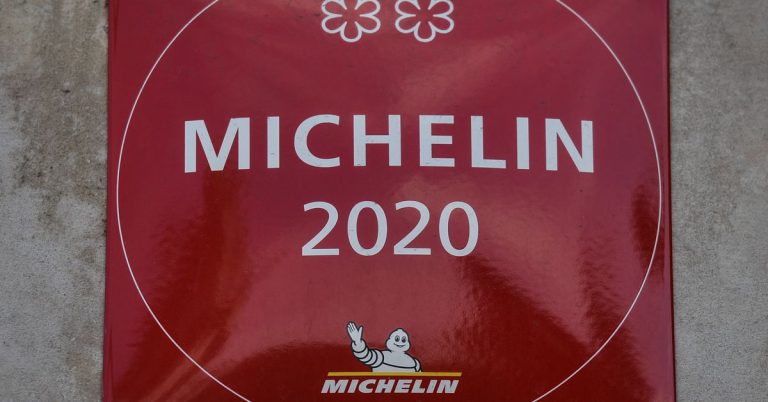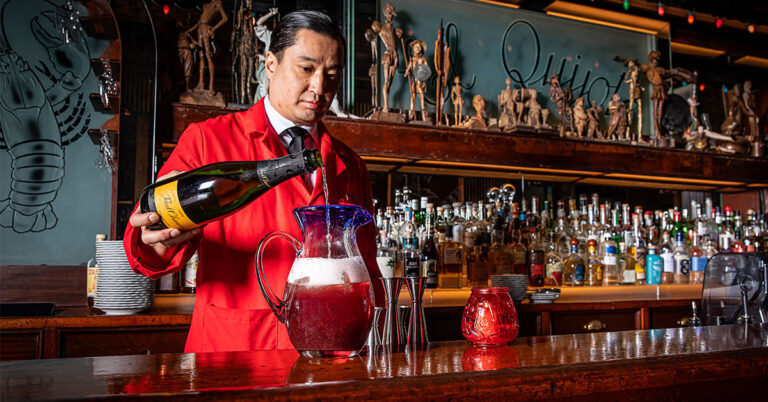Why Every Snack Is Flamin’ Hot
“More than a spicy sensation or a national craze, Flamin’ Hot is an attitude, one that pushes you to reject the status quo and embrace your inner edge,” writes a brand rep for Ruffles in an email. This comes with the announcement of the company’s new Flamin’ Hot Cheddar and Sour Cream Ruffles, in partnership with LeBron James. As Flamin’ Hot products go, the chips sound pretty tame, maybe enough to question the status quo but not quite reject it. For that you might go for Flamin’ Hot Cool Ranch Doritos, or Flamin’ Hot Smartfood, or Flamin’ Hot Funyuns. Drink Flamin’ Hot Mountain Dew and you might tear down society as it exists and create an anarchist utopia, who knows?
At this point, there seems to be nary a Frito-Lay brand that hasn’t been touched by the Flamin’ Hot IP, and given that Frito-Lay is a subsidiary of PepsiCo, the possibilities are basically endless. Is Flamin’ Hot Gatorade in our future? Flamin’ Hot Quaker Oats? Probably, because the popularity of Flamin’ Hot exists at the intersection of consumers’ love for spicy foods and novelty, and a corporation’s love for an easy way to pretend it’s making something “new.” Don’t be surprised if everything becomes Flamin’ Hotted.
:no_upscale()/cdn.vox-cdn.com/uploads/chorus_asset/file/23209646/Ruffles_Flamin_Hot.jpeg)
The origins of Flamin’ Hot have recently been heavily disputed, but it seems multiple people at Frito-Lay began testing spicy snacks in the ’90s, seeing how popular they were in Latino markets. It began with Cheetos, but the flavoring also made its way to popcorn and chips in certain markets, while the company introduced other spicy flavors (in 1997 Frito Lay made Spicy Nacho Doritos, and in 2001 wasabi Funyuns). In 2004, competitor Grupo Bimbo introduced Takis in the U.S. and they quickly rose in popularity, especially among kids, causing a moral panic about the state of their stomach linings.
Outlandish flavors in kids snacks is nothing new — the schoolyard has long been the site of dares around heaps of sour pops, cinnamon gum, or Raven’s Revenge, those test tubes of basically sugar that I still can’t believe the creators got away with. But Flamin’ Hot’s popularity doesn’t just exist because kids have a death wish. Americans have always loved spicy food. As Sarah Lohman writes in her culinary history Eight Flavors, “Two hundred years ago, black pepper was considered hot; now a jalapeño hot sauce is universally loved.” Chile powder and sriracha have become hallmarks of American cuisine, and the hottest (both in popularity and flavor) condiment of the past few years is chile crisp. We just like hot things.
In a statement, Frito-Lay told Eater, that Flamin’ Hot fandom is on the rise. “Spicy salty snacks have spiked in popularity in recent years with the category growing 12 percent in the last four years. According to a recent survey, over half (55 percent) of U.S. consumers have tried Cheetos Flamin’ Hot and 46 percent of Gen Z say they love them,” it says. “That’s why we continue to find new ways to innovate and bring new additions to the Flamin’ Hot portfolio, like the recent launch of Doritos Flamin’ Hot Cool Ranch.”
It’s not just the heat, though, as familiarity also seems to be a factor. We like hot things that are combined with other flavors we already like. None of the products with the Flamin’ Hot treatment are new. Frito-Lay has not considered what precise spicy flavorings would work well on a Frito, and if those might differ from what would work on cheddar popcorn. Instead, every snack gets the same Flamin’ Hot wash. It’s an easy way to appear innovative without doing any work.
I admit, it works. For a while, every time I passed the chip display in my bodega there was a moment where I think, “Oh shit, they flamin’ hotted that too!” But as more and more brands are added to the Flamin’ Hot roster, I instead think of propaganda. In America, we’re often told that capitalism breeds variety, and that to live under a different economic model would mean bread lines and aisles upon aisles of government-branded foods — no variety, no choice. But a bodega full of only Flamin’ Hot snacks is the natural result of brand consolidation and monopolization, which ultimately limits the variety of foods at our disposal.
We don’t have a plethora of spicy snacks vying for market dominance based on quality. We have what already exists, made with the same strains of corn and wheat and soybean oil, and now made Flamin’ Hot, a descriptor so ubiquitous that you can almost hear the trademark in the name. And when every food is owned by Frito-Lay or Coca-Cola or Nestlé, it makes things like, say, boycotting a company in solidarity with striking workers who speak of people dying on the job, incredibly difficult for the consumer, which is exactly what the corporation wants.
The Ruffles are good. The Flamin’ Hot flavoring happens to work well with the combined dairy powders of cheddar and sour cream. But they could probably be even better, or maybe just different. And we’ll probably never know.






